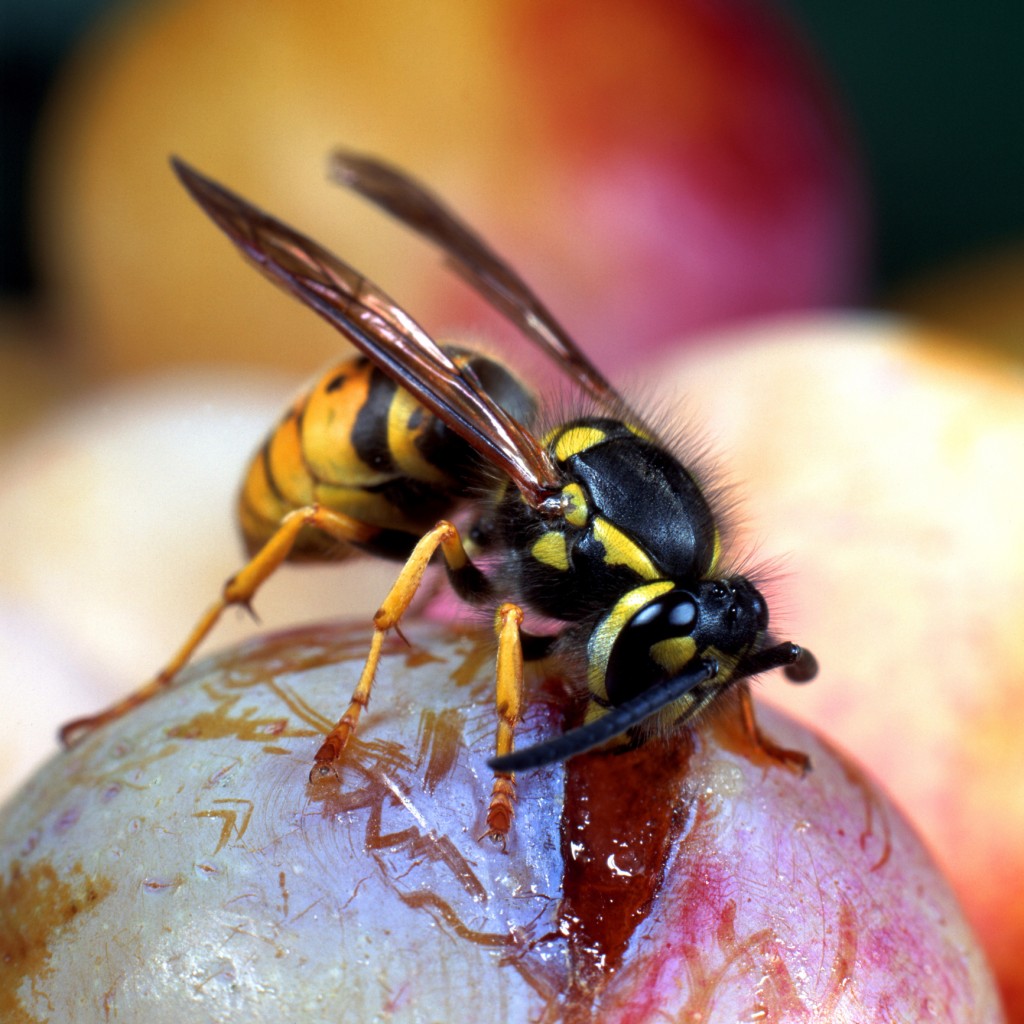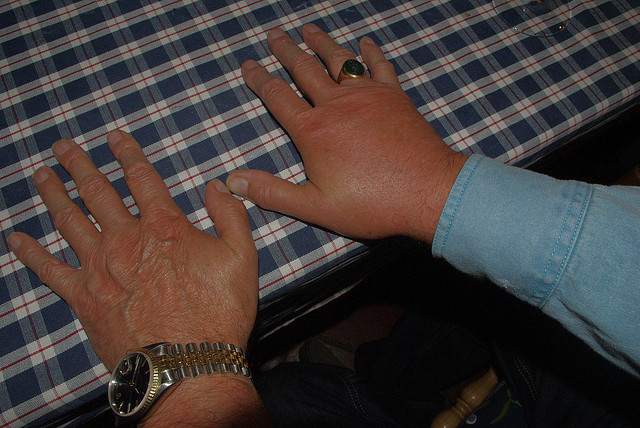Avoiding A Wasp Sting
One of the most common questions we are asked is “When do wasps sting you?”. This is a great question and there are plenty of myths and legends to go along with it. While some believe they are only out to take revenge on the human race and eventually take over the world, we would have to disagree.

Aside from someone who actually steps on a wasp nest, most people are stung in mid-to-late summer. This happens because the normal social structure of the wasp colony is breaking down and the annual cycle is changing. The fertile queens are starting to get ready to hibernate over the winter to start new colonies the following spring. The queens are no longer releasing the hormone that maintains the colony cohesion so the worker wasps are disoriented. They are searching for sweet foods like soft drinks or jelly and usually find themselves among humans. This is when wasps sting, when they are disoriented.
Once You’ve Been Stung by a Wasp
Wasp stings can be extremely uncomfortable and are a common summer ailment to the unsuspecting outdoorsy individual. Unless you’re among those unfortunate few who are severely allergic to wasp venom, the sting can most likely be treated at home with a few simple materials and techniques.
Remove the Stinger
Before you can treat the injury effectively, you must remove the stinger. Some sources recommend removing the stinger with a flat, non-sharp, makeshift tool (like a butter knife or a credit card) applied by scraping gently along the skin in the opposite direction of the sting. This will prevent the venom sack from releasing further toxins into the body (a risk if you use tweezers to pull out the stinger). It is, however, important to remove the stinger as quickly as possible (as WebMD confirms): if no flat object is readily available, then remove the stinger with whatever means you have at your disposal.
Clean the Site
Keeping the wound site clean is very important so that you don’t run the risk of infection. Once the stinger is removed, thoroughly cleanse the surrounding area using a gentle soap and warm water.
Topical Relief
The sting site may be red, slightly swollen, and sore. These symptoms can be treated by applying ice: 10 minutes on, then 10 minutes off, repeated as necessary according to MedlinePlus, a service of the U.S. National Library of Medicine. Calamine lotion is also an effective way to soothe the irritation that comes with a wasp sting. A topical hydrocortisone cream can reduce local mild allergic reactions to a sting and also provide some welcome pain relief.
Other, more homegrown remedies for treating the area around a wasp sting include a baking soda paste (baking soda mixed with a little water applied liberally to the area), or a paste of unseasoned meat tenderizer mixed with water (the meat tenderizer includes an enzyme which is effective in breaking down bee and wasp venom). Mud can also be used to cool and calm the skin around the sting site. Further information on all-natural treatments can be found here. Another longstanding but less well-proven method for relieving the pain: apply vinegar (preferably white or apple cider) to the site. This neutralizes toxins in the venom and eases pain.

Oral Medications
There are several over-the-counter oral medications that can help to soothe the symptoms of a wasp sting when used in conjunction with the topical remedies discussed above.
An antihistamine may be used to alleviate mild symptoms. Diphenhydramine (found in Benadryl) or loratadine (found in Claritin) can help to calm irritation from a sting (more information on these treatments is available here). This is available as an oral tablet, but may also be found in a cream, gel, or stick dispensing mechanism and applied directly to the affected area.
An oral analgesic will help to ease general pain associated with a wasp sting. Ibuprofen or acetaminophen taken immediately after being stung can relieve discomfort and pain.
Further Medical Attention
If you have been stung and your tetanus shot is ten or more years out of date, you should seek professional care within 3-4 days of the injury to ensure that you have an up-to-date tetanus booster.
If you begin to experience respiratory distress; swelling of the throat, lips, or mouth; loss of consciousness; chest pain; nausea; or vomiting; these can be symptoms of a more severe allergic reaction. Seek professional medical attention immediately.
If you’ve identified a wasp nest and are in need of professional wasp removal services, don’t wait. Call Eliminate ‘Em today!




